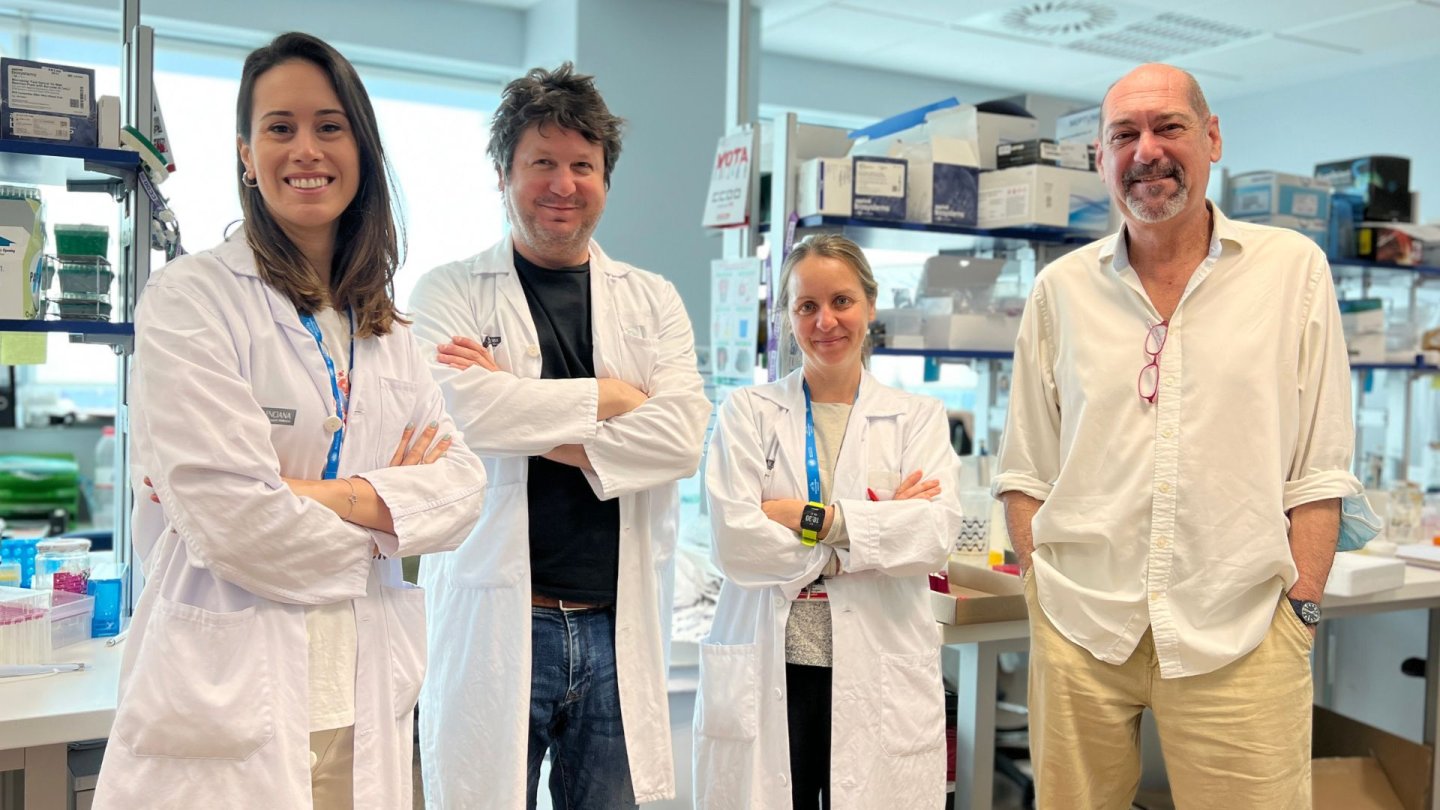News
The IIS La Fe advances in the identification of new signalling pathways and therapeutic targets for neurodegenerative pathologies such as Huntington's disease.
The Molecular, Cellular and Genomic Biomedicine Research Group at IIS La Fe and the Centre for Biomedical Research on Rare Diseases Network (CIBERER) is making progress in the identification of new signalling pathways and therapeutic targets that could be potential treatments for neurodegenerative diseases such as Huntington's disease (HD).

A study using the nematode model Caenorhabditis elegans (C.elegans) has identified several components of a hormonal signalling pathway (sulfotransferases and sulphatases) that activate a nuclear receptor (NHR-1) to produce lipid changes (elongases, desaturases, etc.) that modulate protein homeostasis. Many of these components have homology with mammals, and their activity can be modulated, making them potential pharmacological targets for this disease.
As reported in the article 'Changes in lipid metabolism driven by steroid signalling modulate proteostasis in C. elegans', published in the journal EMBO Reports, researchers from IIS La Fe and CIBERER, in collaboration with other institutions, have discovered that the release of a hormonal signal from sensory neurons of the worm C. elegans, called ASJ, modulates the activity of the nuclear receptor NHR-1, responsible for regulating lipid metabolism genes.
Other neurodegenerative diseases such as Alzheimer's and Parkinson's diseases and amyotrophic lateral sclerosis (ALS) have components in common with HD, in which toxic protein aggregates result from misfolding of disease-causing proteins.
The author of this study, Dr. Ana Pilar Gómez, says that "the characterisation of the genes that modify the disease - accelerating or delaying it - is fundamental for finding new ways to combat this pathology". Therefore, the objective of the Molecular, Cellular and Genomic Biology laboratory, in collaboration with research groups such as the Analytical Unit and the Biomarkers and Precision Medicine Unit (UBYMP) of the IIS La Fe, among others, is to identify new signalling pathways and therapeutic targets that regulate protein homeostasis associated with misfolded protein defects with a tendency to aggregate and that can be modulated by drugs, as has been demonstrated for the AMPK enzyme complex, which can be activated by different drugs such as metformin and salicylate (Gómez-Escribano AP et al. , 2020, Pharmacological research).
In this regard, it has been observed that, in the worm C. elegans, in whose cells some of the problems that patients' neurons have are reproduced, the release of a hormonal signal that is distributed to other tissues modulates the activity of the NHR-1 nuclear receptor. By altering the expression of fat metabolism genes, there is a substantial impact on the aggregation of polyglutamine-containing proteins (polyQs).
Huntington's disease
HD is a genetic disease caused by an expansion of the CAG (cytosine, adenine, guanine) repeats in the first exon of the HTT gene encoding the huntingtin protein. When these expansions are repeated up to 36 times or more, patients suffer neurodegeneration mainly affecting the striatum and prefrontal cortex.
It is a minority disease due to its low prevalence and is characterised by a progressive deterioration of motor and cognitive skills, as it causes neurons in these regions to stop functioning. Patients suffering from this pathology manifest chorea (involuntary movements), motor incoordination, psychiatric disorders and cognitive decline.
There is currently no treatment to slow down or cure the disease. Movement disorders are treated with antichoretics and psychiatric problems with standard antidepressants. Work carried out by the Molecular, Cellular and Genomic Biomedicine research group in animal models of HD and cross-sectional studies of HD patients seeks to identify genes that accelerate or delay the onset of symptoms, as their characterisation would allow the identification of new modulation pathways and potential therapeutic targets that restore the homeostasis of proteins with a tendency to aggregate, as in the recently published work.







